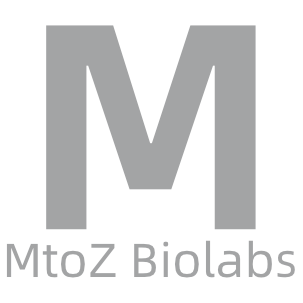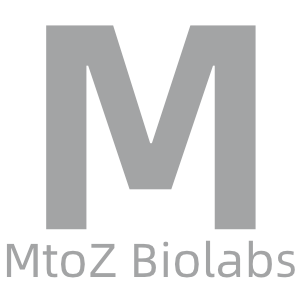Metabolomics Analysis
-
• Dihydrothymine Analysis Service
Dihydrothymine is a reduced derivative of thymine, a pyrimidine base that is an essential component of DNA. Its structure consists of a thymine core in which the double bond between the carbons at positions 5 and 6 has been reduced, resulting in a dihydropyrimidine ring. This compound is primarily known for its role in the catabolic pathway of pyrimidine metabolism, where it is formed from thymine by the action of the enzyme dihydropyrimidine dehydrogenase (DPD), which catalyzes the initial and rate-limitin
-
• Dihydrouracil Analysis Service
Dihydrouracil is a reduced derivative of uracil, a pyrimidine base that is a key component of RNA. Its structure consists of a uracil core where the double bond between the carbons at positions 5 and 6 has been reduced, resulting in a dihydropyrimidine ring. This compound is primarily known for its role in the catabolic pathway of pyrimidine metabolism, where it is formed from uracil by the action of the enzyme dihydropyrimidine dehydrogenase (DPD), which catalyzes the first and rate-limiting step of uracil
-
• Aceglutamide Analysis Service
Aceglutamide is an acetylated derivative of L-glutamine, an amino acid involved in various metabolic processes in the body. Its structure consists of a glutamine core with an acetyl group attached to the amino group, enhancing its stability and bioavailability. This compound is primarily known for its role in supporting cognitive function and improving memory due to its neuroprotective and neurotrophic properties. Aceglutamide is believed to facilitate neurotransmitter synthesis and improve neuronal metabol
-
• Palmitoyl Ethanolamide Analysis Service
Palmitoyl ethanolamide (PEA) is an endogenous fatty acid amide formed by the connection of a long-chain saturated fatty acid (palmitic acid) and ethanolamine through an amide bond. Its structural characteristic is the combination of a 16-carbon long-chain fatty acid with ethanolamine. In the body, PEA is metabolized by enzymes such as N-acylethanolamine hydrolyzing acid amidase (NAAA) and fatty acid amide hydrolase (FAAH). Its metabolic process includes hydrolysis into palmitic acid and ethanolamine, which
-
Caffeine, also known as 1,3,7-trimethylxanthine, is a naturally occurring methylxanthine alkaloid synthesized through the purine metabolism pathway in plants. Its structure consists of a xanthine core with three methyl groups attached to the nitrogen atoms at positions 1, 3, and 7. Caffeine has notable stimulant effects on the central nervous system, acting primarily as an adenosine receptor antagonist to block the sedative effects of adenosine, thereby enhancing neuronal activity and alertness.
-
• N-Methyltryptamine Analysis Service
N-methyltryptamine (NMT) is a tryptamine compound formed by introducing a methyl group to the nitrogen atom of tryptophan or tryptamine through the action of N-methyltransferase. Its structure consists of an indole ring, an ethyl side chain, and a methylated amino group attached to the side chain. NMT acts as a bioactive molecule in the body and may play roles in various physiological processes, including neurotransmission and cardiovascular regulation.
-
cGMP (cyclic guanosine monophosphate) is a cyclic nucleotide formed by a guanine base, ribose, and a phosphate group linked by a phosphodiester bond. Its phosphate group forms a cyclic structure through an ester bond with the 3' and 5' hydroxyl groups of the ribose. cGMP is an important intracellular second messenger that plays a key role in various physiological processes and signaling pathways. It is primarily synthesized from GTP (guanosine triphosphate) by the action of guanylate cyclase (GC) and is ina
-
• 2-Aminooctanoic Acid Analysis Service
2-Aminooctanoic acid is an organic compound belonging to the aliphatic amino acids, characterized by an eight-carbon straight-chain fatty acid backbone with an amino group (-NH2) attached at the 2-position. In the body, 2-aminooctanoic acid can be further metabolized into other metabolites through the action of various enzymes, with its metabolic processes and rates influenced by individual differences, enzyme activity, and health status.
-
• Pyrrole-2-Carboxylic Acid Analysis Service
Pyrrole-2-carboxylic acid is an organic compound and a derivative of pyrrole, characterized by a carboxyl functional group attached to the 2-position of the pyrrole ring. Its structure features a five-membered pyrrole ring combined with a carboxyl group (-COOH) at the 2-position. In the body, pyrrole-2-carboxylic acid can be further metabolized into other products through the action of various enzymes, with its metabolic processes and rates influenced by individual differences, enzyme activity, and health s
-
• Betaine Aldehyde Chloride Analysis Service
Betaine Aldehyde Chloride, also known as trimethylglycine, is a quaternary ammonium salt that originates from the metabolism of choline. Structurally, it is characterized by the presence of three methyl groups attached to a nitrogen atom. Betaine aldehyde chloride serves as a methyl donor in the methionine cycle and is involved in the conversion of homocysteine to methionine.
How to order?







